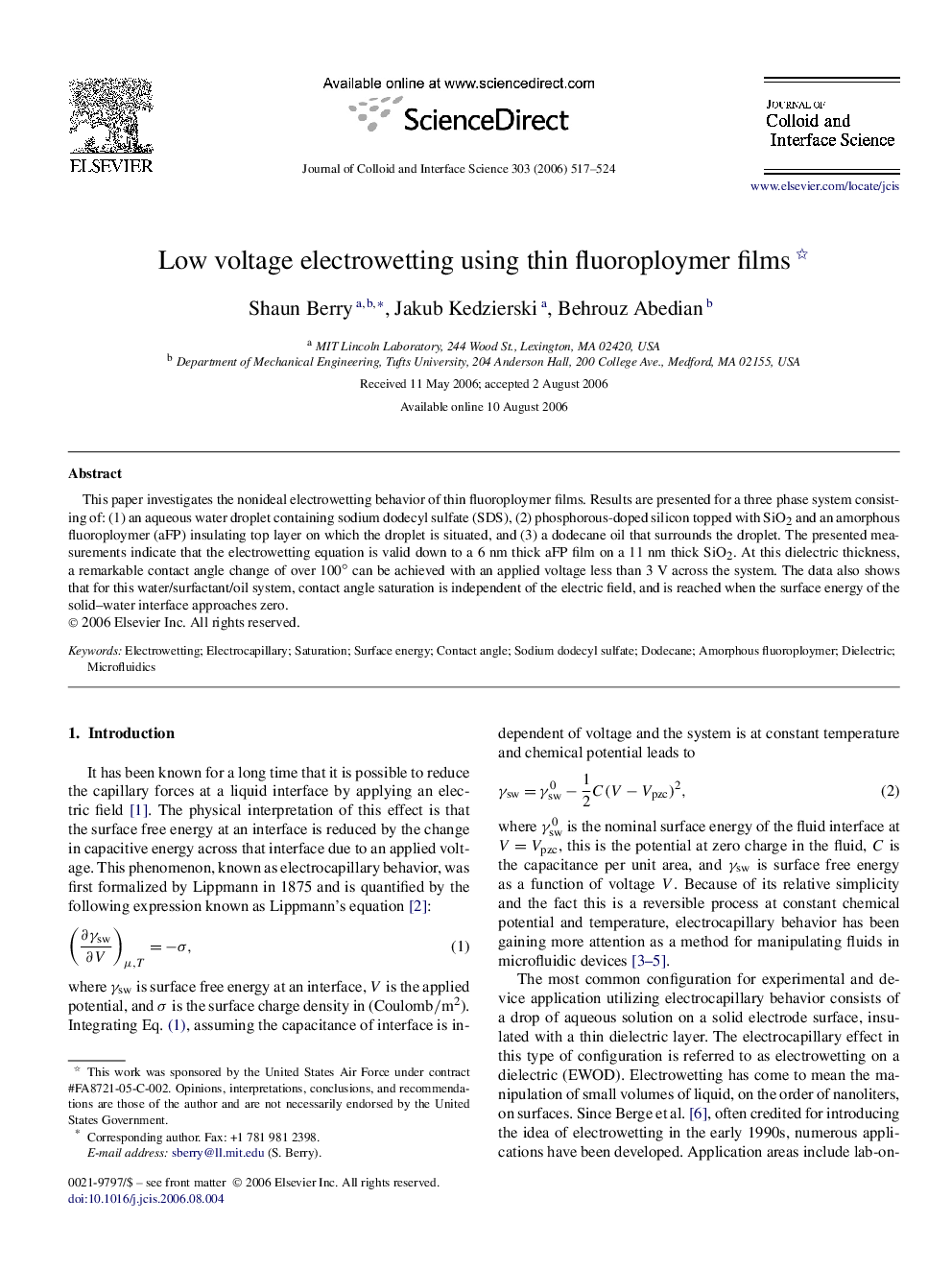| Article ID | Journal | Published Year | Pages | File Type |
|---|---|---|---|---|
| 612889 | Journal of Colloid and Interface Science | 2006 | 8 Pages |
This paper investigates the nonideal electrowetting behavior of thin fluoroploymer films. Results are presented for a three phase system consisting of: (1) an aqueous water droplet containing sodium dodecyl sulfate (SDS), (2) phosphorous-doped silicon topped with SiO2 and an amorphous fluoroploymer (aFP) insulating top layer on which the droplet is situated, and (3) a dodecane oil that surrounds the droplet. The presented measurements indicate that the electrowetting equation is valid down to a 6 nm thick aFP film on a 11 nm thick SiO2. At this dielectric thickness, a remarkable contact angle change of over 100° can be achieved with an applied voltage less than 3 V across the system. The data also shows that for this water/surfactant/oil system, contact angle saturation is independent of the electric field, and is reached when the surface energy of the solid–water interface approaches zero.
Graphical abstractThe figure illustrates an example of electrowetting behavior. It shows a sessile drop, ∼1 mm∼1 mm diameter, at 0 V and when 5 V is applied.Figure optionsDownload full-size imageDownload as PowerPoint slide
